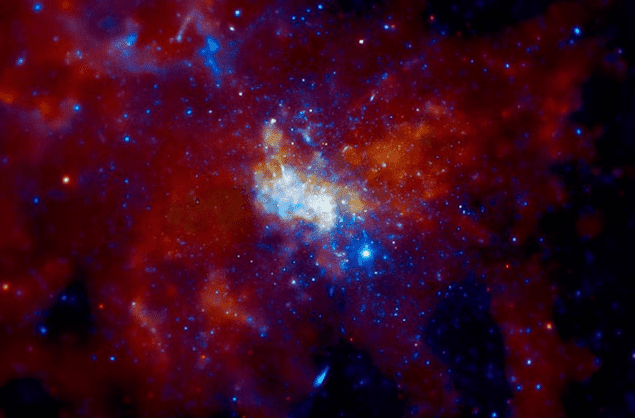
A key aspect of Einstein’s general theory of relativity (GR) has been tested using the strongest gravitational field so far. The measurement was made by observing changes in optical absorption lines of a star orbiting close to Sagittarius A* – the supermassive black hole at the centre of the Milky Way.
The work was done by physicists working on the GRAVITY Collaboration, which uses the Very Large Telescope at the European Southern Observatory in Chile.
Since it was first proposed in 1915, GR has stood firm against every experimental challenge that physicists have come up with. Many of these tests have focused on an important tenet of GR called the Einstein equivalence principle (EEP). Detecting a breakdown of the EEP could point towards new physics beyond GR and could provide important clues about how to develop a quantum theory of gravity.
Different systems
One key element of the EEP is local position invariance (LPI), which says that local nongravitational measurements on a system must be the same, no matter where they are measured in space-time. LPI has been tested by comparing the properties of two different systems as they both experience the same change in gravitational potential. If LPI holds, then the change in gravity should affect both systems in the same way. If LPI is violated, however, gravity would affect the systems differently and this could be detected.
One such test compared the timekeeping of two different types of atomic clock as the gravitational pull of the Sun changes throughout the year – a result of Earth’s elliptical orbit. Another test involved looking at the colours of the light emitted from iron and nickel ions in white-dwarf stars and comparing it to the light emitted from the same ions on Earth – where gravity is much weaker. In both cases, the two systems changed in the same way and no violation of LPI has so-far been detected in these and other experiments.
This latest research by the GRAVITY Collaboration uses observations of the absorption spectra of hydrogen and helium atoms in a star called S2, which closely orbits Sagittarius A*. The supermassive black hole has a mass of more than 4 million times that of the Sun and S2 has a highly eccentric orbit. This means that S2 experiences a huge change in gravitational potential during its journey around Sagittarius A*.
Close encounter
The GRAVITY team measured the hydrogen and helium absorption lines from S2 over three years as it made its closest approach to Sagittarius A* in May 2018. Within the measurement’s margin of error, the positions of the hydrogen and helium absorption lines shifted according to the predictions of GR with no evidence for LPI violation.

The descent of mass
The GRAVITY team says that their measurements were made in a gravitational field 1 million times stronger than that available on Earth and 10 times stronger than the white-dwarf observations. However, they expect this record to fall once the Extremely Large Telescope begins operation in Chile in 2024. This telescope should be able to study stars even closer to Sagittarius A* than S2, which would be subject to even larger fluctuations in gravitational potential.
The study is described in Physical Review Letters.



